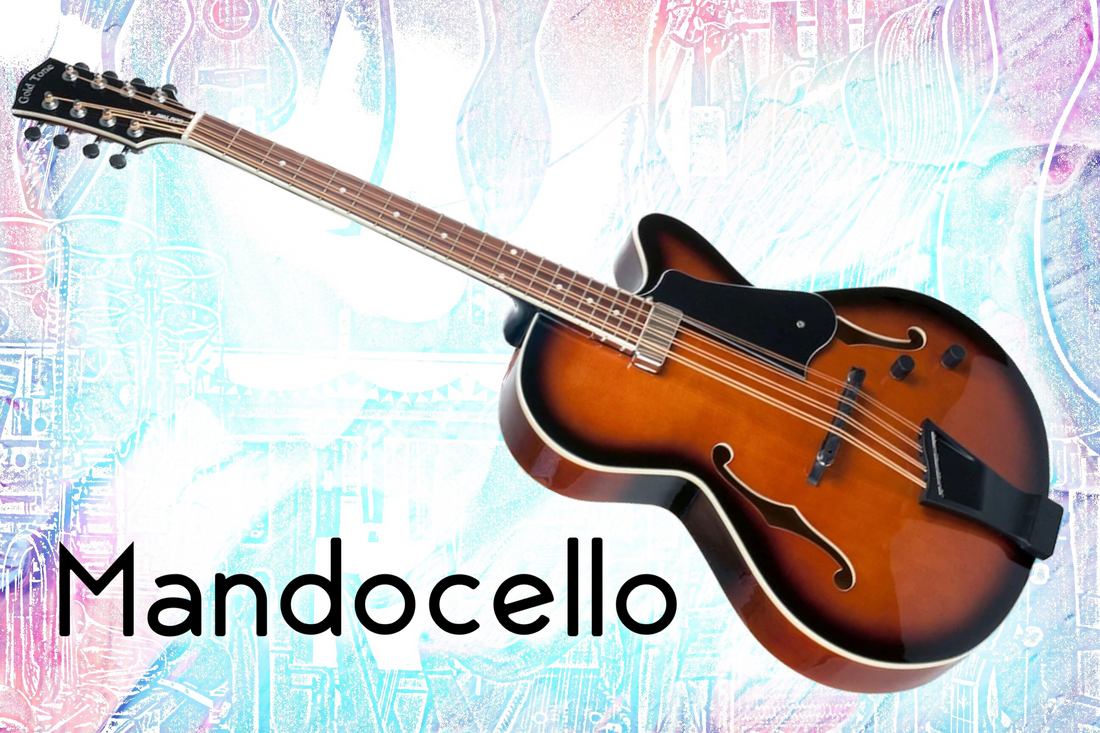The origins of the mandocello (or mandoloncello) are a bit hazy, but it seems clear that this instrument was likely developed for use in musical ensembles along with other members of the mandolin family (read more about this in our previous blog post). Mandocellos appeared both in Europe and America in the 1880s and 90s as mandolin orchestras gained popularity. Luigi Embergher introduced a quartet of these instruments, including mandolins, tenor mandola, and mandocello, with the goal of imitating a bowed string quartet.
Several different American instrument manufacturers were listing mandocellos among their offerings by the early 1900s (Gibson as well as Howe-Orme and Francis O Gutman, to name a few). In the following few decades, other companies followed suit, but mandocellos were never made in large numbers. Mandolin orchestras were also prevalent in the UK during the early 1900s, with J E Dallas of London supplying a number of orchestras and bands with a range of mandolins, including sopranino, octave mandolin (which he called mandolo), and mandocello. Some of these vintage instruments still come up for sale from time to time, but they tend to be more rare (and expensive as a result).
The mandocello is tuned an octave plus a fifth below the mandolin, and like a cello, it is tuned to CGDA. Generally it has a 25" scale length, and it is sometimes restrung for octave mandolin tuning, or to match the Irish bouzouki's GDAD. Compared to a mandolin or violin, the mandocello lives in the bass register, and as such is an excellent accompaniment instrument to provide solid bass lines and chordal accompaniment. Like a guitar, mandocello can also be a great way to provide self-accompaniment when singing.
If you're looking to try one yourself, we sell a mandocello by Gold Tone in our store, and it is by far the least expensive instrument of its type available. Even so, it features a deluxe dual pickup system, providing a superb plugged-in tone. Although it's shaped much like a guitar, with a Venetian-style cutaway body, the doubled strings help set it apart in its tone. If you're looking for a guitar-like instrument, tuned in fifths, this could be a great fit for you!
Videos Featuring the Mandocello:
- Mike Marshall, introduction to Mandocello
- Baron Collins-Hill, introduction liuto cantabile
- Mark O'Connor plays Mandocello
- Sierra Hull plays and sings with Mandocello
Some Recommended Reading:

